what is the prognosis for malignant pleural effusion
It is a fairly common complication in a number of different cancers. Chest pain Dry nonproductive cough Dyspnea shortness of breath or difficult labored breathing Orthopnea the inability to breathe easily unless the person is sitting up straight or standing erect.

Management Of Malignant Pleural Effusions The Figure Is Modified From Download Scientific Diagram
It is the most common manifestation of pleural disease and its etiologies range in spectrum from cardiopulmonary disorders andor systemic inflammatory conditions to malignancy.

. These complications drove up the cost of treating malignant pleural effusions especially in people with malignant mesothelioma. Symptoms are often distressing and its presence signifies advanced disease. This condition is associated with very high mortality with life expectancy ranging from 3 to 12 months.
View chapter Purchase book Pleural Effusion and Empyema. M anaging patients with malignant pleural effusion can be challenging. Malignant pleural effusion is sometimes accompanied by the formation of fibrous adhesions resulting in a multiloculated effusion.
Learn About Your Cancer Diagnosis to Help Prepare You for Your Journey. Shortness of breath Dry cough Pain Feeling of chest heaviness or tightness Inability to lie flat Inability to exercise Generally feeling unwell Tell your health care team if you experience any of the above symptoms. The patient may have unrelated symptoms due to the disease or condition that has caused the effusionSymptoms of pleural effusion include.
Ad Visit The Official This Is Living With Cancer Site To Find Support Designed For You. Malignant pleural effusion is a condition in which cancer causes an abnormal amount of fluid to collect between the thin layers of tissue lining the outside of the lung and the wall of the chest cavity. Malignant pleural effusion refers to the presence of fluid in the pleural space due to an underlying malignancy.
The majority of patients with malignant pleural effusion will experience dyspnea. For example median survival of patients with lung cancer is 3 months whereas it is 10 months for patients with breast cancer. Ad Looking for top results.
Diagnosis and Management of Pleural Effusions. MPE can be a complication of any malignancy but in patients with lung cancer the frequency of MPE ranges from 7 to 23 1 MPE is characteristic of advanced malignancies but it may also appear in patients with a longer projected survival eg those with lymphomas including Hodgkins disease and breast carcinoma. This can cause you to feel short of breath andor have chest discomfort.
Symptomatic malignant pleural effusion is a common clinical problem. Median survival is also shorter in patients with encasement atelectasis 3 months. Malignant pleural effusion MPE is defined as the accumulation of a significant amount of exudate in the pleural space accompanied by the presence of malignant cells or tumour tissue.
This diminishes the efficacy of drainage and makes successful pleurodesis impossible leaving the patients with severe. DWEIK Department of Pulmonary Allergy and Critical ORIGINAL ARTICLE Care Medicine Cleveland Clinic Pleural effusion is defined as an abnormal amount of Cleveland OH USA pleural fluid accumulation in the pleural space and is the result of an imbalance between. Dyspnea may cause limitations in ability to perform activities of daily living in a substantial proportion of patients.
Studies are contributing evidence on an increasing number of therapeutic options therapeutic thoracentesis thoracoscopic pleurodesis or thoracic drainage indwelling pleural catheter. You may experience the following symptoms. Symptomatic malignant pleural effusion is a common clinical problem.
Common symptoms of a pleural effusion include. Invite Friends And Loved Ones To Support You See Important Updates All In One Place. Lung cancer and breast cancer account for about 50-65 of malignant pleural effusions.
This study aimed to obtain contemporary data on survival by underlying tumour type in patients with MPE identify prognostic indicators of overall survival and develop and validate a prognostic scoring system. A pleural effusion can cause uncomfortable side effects. The build-up of fluid presses on the lung making it difficult for the lung to expand fully.
Moreover mortality is higher for patients with malignant pleural effusion compared with those with metastatic cancer but no malignant pleural effusion. Am J Respir Crit Care Med Vol. The average cost of IPC setdrainage bottles ranged from 20256 2490 to 12005 1476 if it was placed on an outpatient basis 1100 1352 if survival was.
MPE presents a severe medical condition which can result in breathlessness pain cachexia and reduced physical activity. Malignant Pleural Effusion A malignant pleural effusion MPE is the build up of fluid and cancer cells that collects between the chest wall and the lung. This condition is associated with very high mortality with life expectancy ranging from 3 to 12 months.
In some situations part or all of the lung will collapse. Other common causes include pleural mesothelioma and lymphoma. Malignant pleural effusion MPE affects 150000 people in the US and over 250000 people in Europe each year and it represents a common finding up to 15 in the advanced stage cancers Lung cancer in men and breast cancer in women account for 5065 of all MPE followed by ovarian metastatic cancer hematological malignancies and malignant pleural.
The main symptom of malignant pleural effusions MPE is shortness of breath 57 typically progressive exertional dyspnea followed by cough 43. This can make you. If the underlying condition is a virus it will need to run its course.
In addition patients may have symptoms of cough and chest pain. Ad Be Ready to Take on Cancer Before After and During Treatment. Breathlessness a cough chest pain.
Ad Pleural effusion occurs when the lining around the lungs fills with fluid and becomes. Find updated content daily for popular categories. Median survival after diagnosis is 4 to 9 months 1 3 although prognosis varies considerably depending on the type and stage of the malignancy.
Doctors may be abl. Prognosis of patients with malignant pleural effusion varies by primary tumor. Studies are contributing evidence on an increasing number of therapeutic options therapeutic thoracentesis thoracoscopic ple.
Background Malignant pleural effusion MPE causes debilitating breathlessness and predicting survival is challenging. A Practical Approach ENRIQUE DIAZ-GUZMAN AND RAED A. Despite progress in therapeutic options the prognosis remains severe and the average survival is 4-9 months from the diagnosis of malignant pleural effusion.

Prognostic Impact Of Malignant Pleural Effusion At Presentation In Patients With Metastatic Non Small Cell Lung Cancer Journal Of Thoracic Oncology
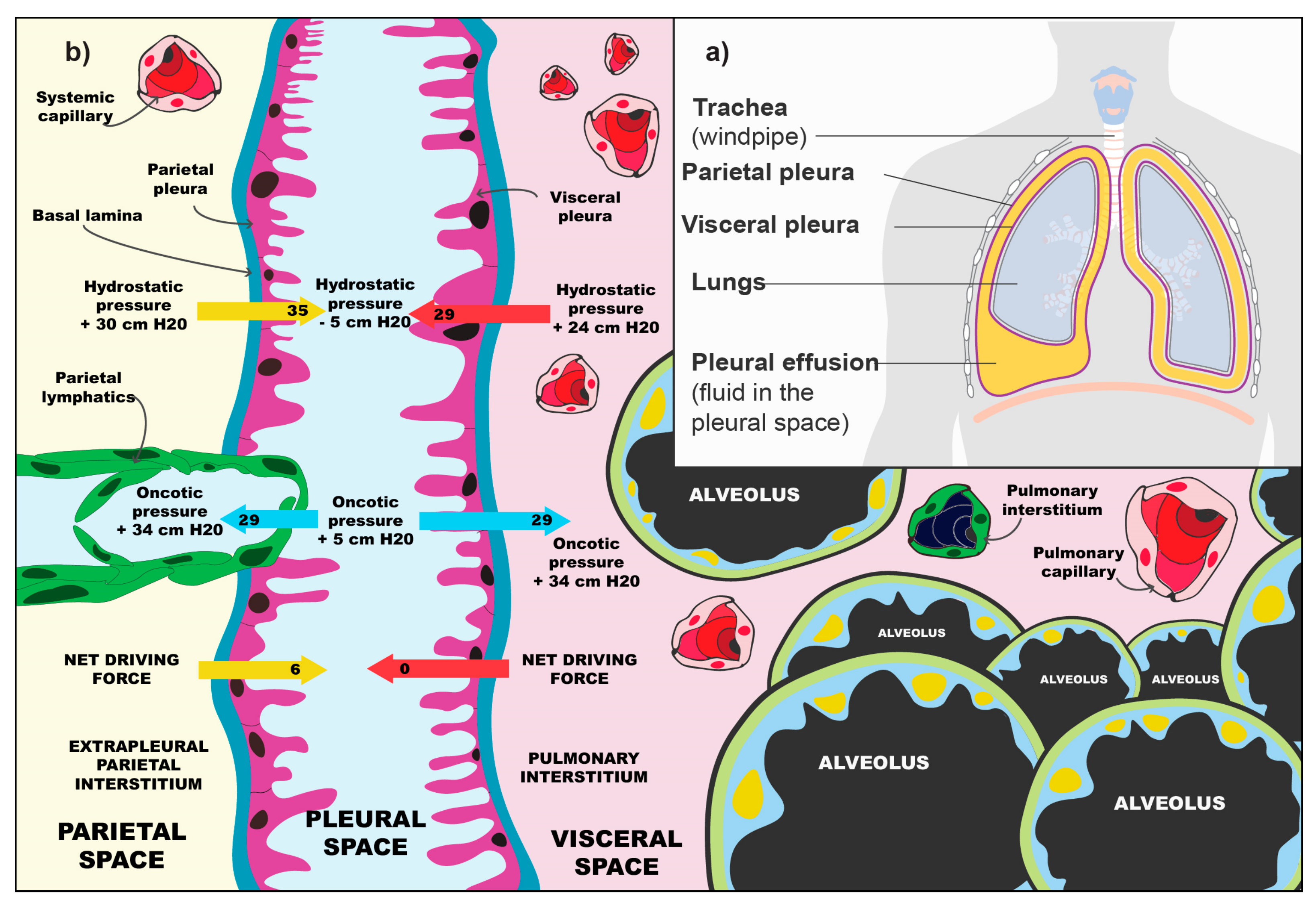
Medicina Free Full Text Malignant Pleural Effusion And Its Current Management A Review Html
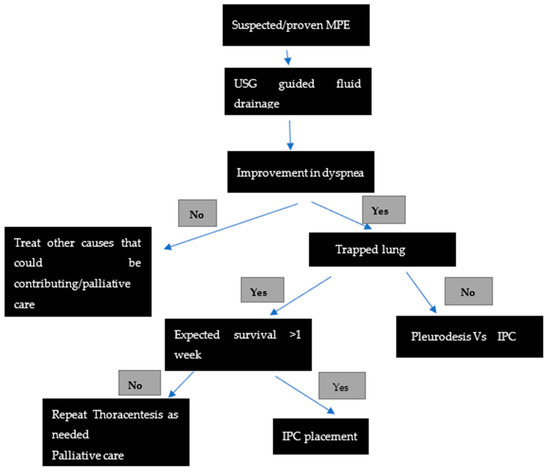
Jcm Free Full Text Malignant Pleural Effusions Mdash A Review Of Current Guidelines And Practices

Pdf Malignant Pleural Effusion Medical Approaches For Diagnosis And Management Semantic Scholar

Malignant Pleural Effusion 03102017 Youtube

Malignant Pleural Effusions Thoracic Key
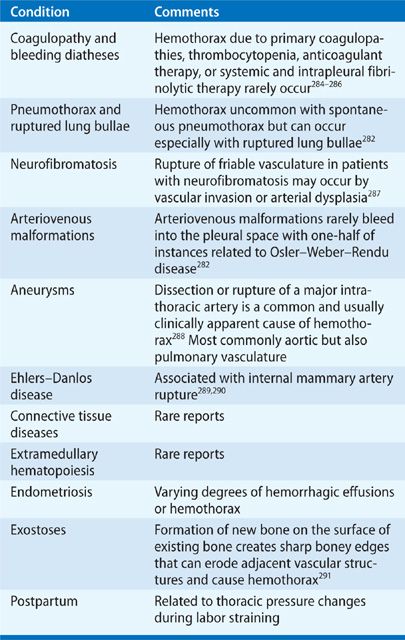
Malignant Pleural Effusions Thoracic Key
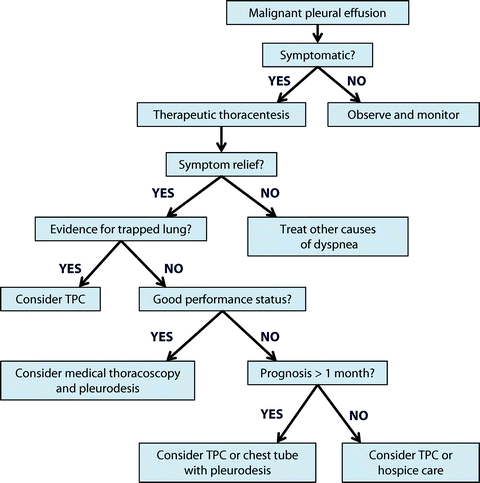
Management Of Malignant Pleural Effusions Springerlink

The Diagnostic Steps In Suspected Malignant Pleural Effusion Table 1 Download Scientific Diagram
Malignant Pleural Effusion Still A Long Way To Go Researcher An
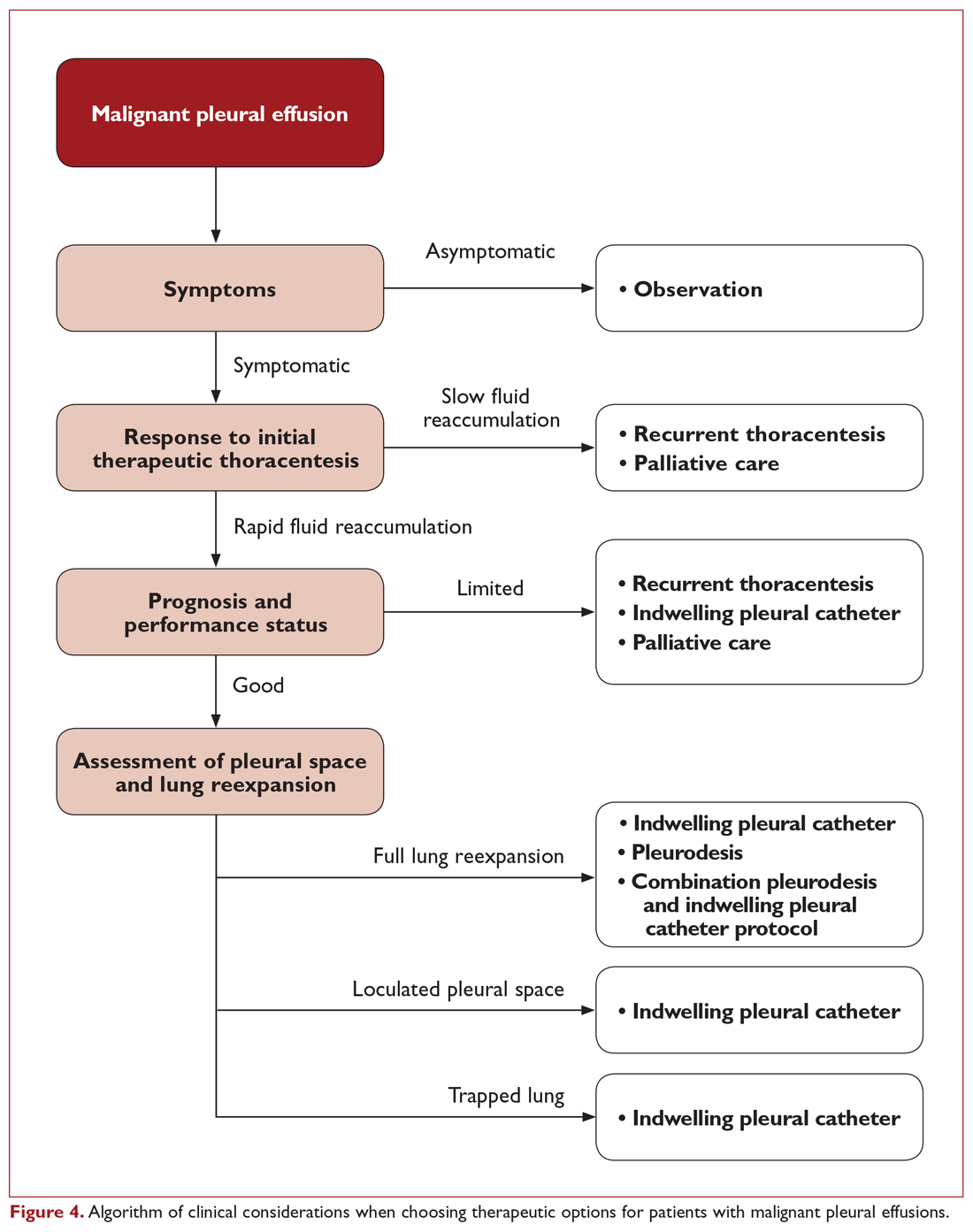
Malignant Pleural Effusion Therapeutic Options And Strategies Pulmonary Health Hub

Pleural Effusion In An Asymptomatic Patient Chest
Pleural Effusion Mesothelioma Causes Signs Treatments
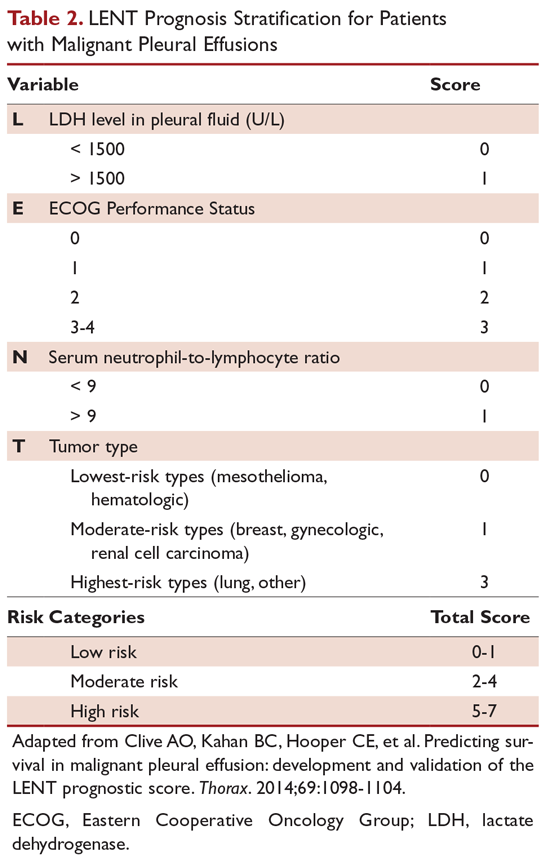
Malignant Pleural Effusion Evaluation And Diagnosis Pulmonary Health Hub

Ers Eacts Statement On The Management Of Malignant Pleural Effusions European Respiratory Society
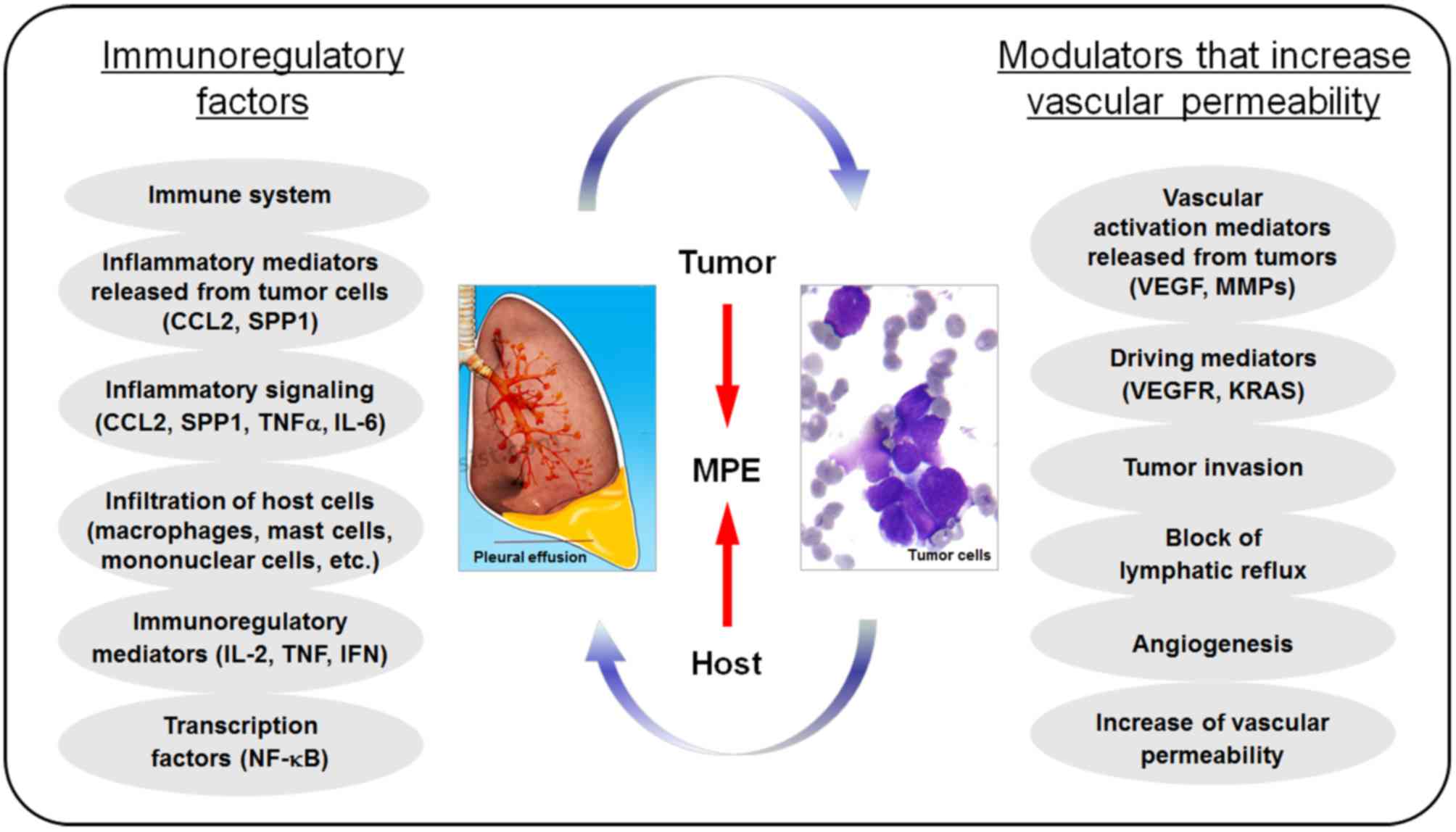
The Role Of Vegf In The Diagnosis And Treatment Of Malignant Pleural Effusion In Patients With Non Small Cell Lung Cancer Review

Treatment Options For Malignant Pleural Effusions Download Table

Malignant Pleural Effusion Management Keeping The Flood Gates Shut The Lancet Respiratory Medicine

Mortality Among Patients With Pleural Effusion Undergoing Thoracentesis European Respiratory Society